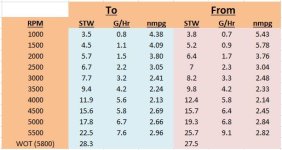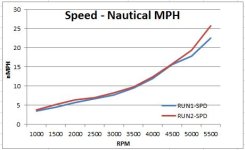With a background in the Tolman Skiff's and Great Alaskian--you obviously have talent in both wood and glass working--you are well prepared to know what the C Dory will do and how it handles.
I don't know the exact dead rise on the Tolman and GA, but by eyeball they look to have slightly more aft than the C Dory line--but the skiffs and GA, appear to carry the flat sections slightly further forward. The ride will be very similar. The C Dory's do have the reverse chine as the Jumbo and GA have--But you also know how much work building one of the larger boats will be.
I am not certain of the "mileage" of the Rosborough: Here is a quote from a blog by skippersteve:
We ended up with twin 150hp four-stroke outboards, that burn about 1.8-2.1gph at 7-8 knots (roughly the same as a single diesel), a reasonable rate at cruising speeds (12-15kts), and lots more on those rare, brief W.O.T. runs (as much as 1gph for every knot of speed we travel at).
I note that many of the Roses run at displacement or semi displacement speeds--much lower than the C Dory (But many C Dorys run at lower speeds also).
this is a study done by a previous owner of my current 25. The figures are almost spot on, with what I find running fully loaded: (at very low speeds the flow gauge is not as accurate, and the fuel usage is less than the table shows.)

Graphic form:

MPH vs RPM--I find the WOT is about 5700, after I have burned off some fuel and water--with speed a little over 28 mph.

In our first C Dory with a 130 Honda, our over all average for over 1000 miles was just about 3.3 mph--including some displacement time over longer runs, to be sure we had adequate range--or just enjoying the scenery.
The C Dory 25 stays on a plane down into the 10 to 12 knot range. We find out most efficient planing speed is up in the low 20's




